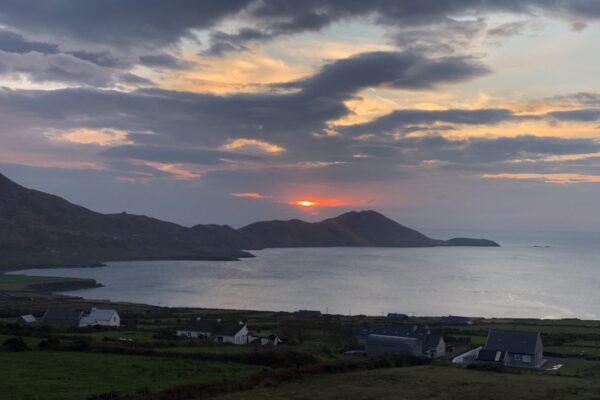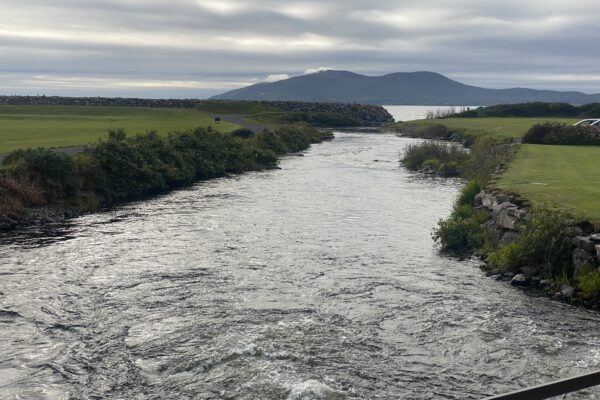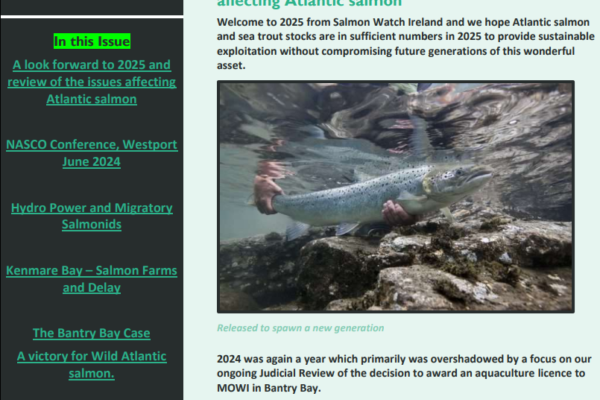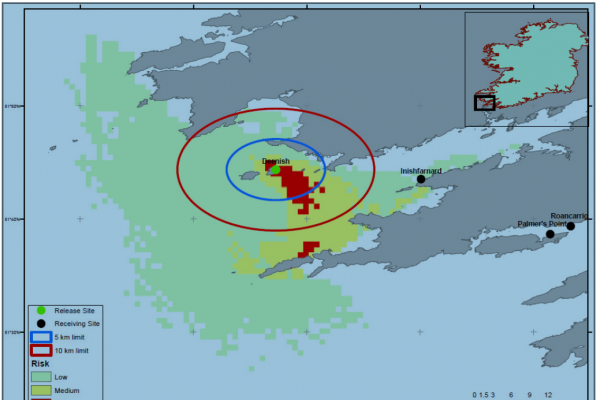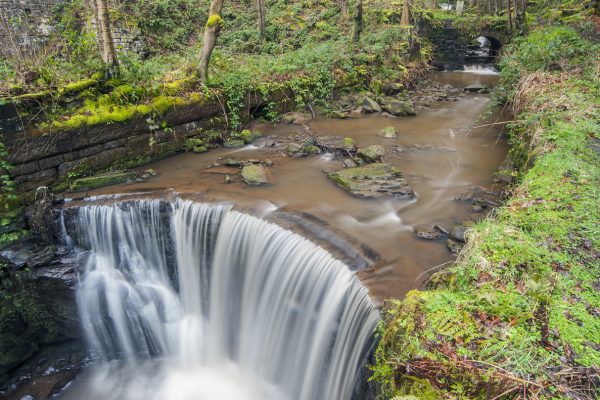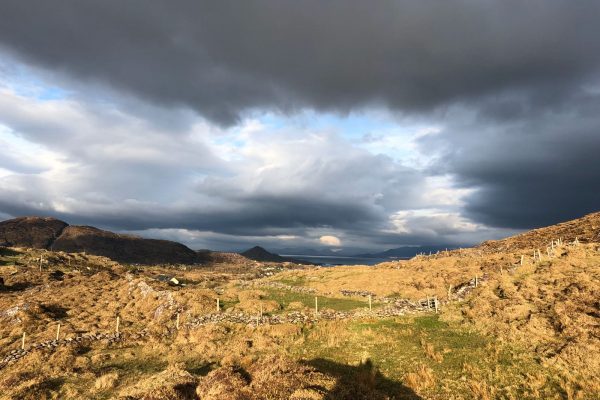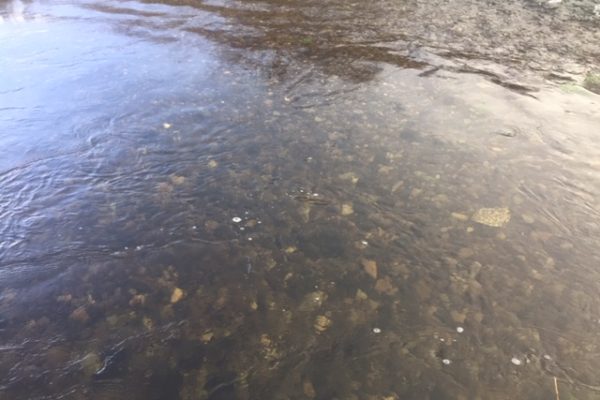-
Latest Update – Issue number 10 – 16 April 2025
This update concerns an update on Straffan Weir and an examination of a refusal to grant information pertaining to mortality figures, stocking rates etc. We have just been informed that our appeal has not been upheld and we will have to appeal to the information commissioner. We fully intend to do this. We certainly feel that the process of public consultation has been effectively usurped by the Department of Agriculture, Food and the Marine. This will certainly be challenged in court if the need arises and certainly would suggest that the public is being effectively blinded to full factual information concerning these public licenses.
Continue reading -
Update 18 March 2025
Waterville Fishery: A look back at research in the period 1980 - 1986 It is calamitous that the fishery now has few sea trout and to repeat this research may not be possible today. Certainly, a situation which can be rescued but only with your help.
Continue reading -
Update 21 February 25 – Salmon Monitoring Report
The report was published recently by Inland Fisheries Ireland and is a comprehensive analysis of the program carried out in 2023. This program is concerned with catchment wide electro fishing, estimation of smolt to adult return survival rates and a study of life cycle characteristics in several catchments. The report is extensive and complex and is strongly indicative of trends evident in salmon populations countrywide.
Continue reading -
Annacotty Weir and Catch Advice 2025
Salmon Watch Ireland would like to update our supporters on the catch advice for 2025 and Annacotty Weir. Please click on the documents below.
Continue reading -
Newsletter 2025 – Salmon Watch Ireland
Please find a PDF copy SWIRL NEWSLETTER 12025 of the newsletter as published today. We anticipate that you may find it of interest. In this issue we among other subjects examine the effect of hydro schemes and the various turbines associated with the many hydro systems around Ireland. It is a subject that we all should be informed about and vigilant about, as there is a renewed interest in the construction of facilities which will impact on salmonid mortality and production. We have also put together a video highlighting the demise of the iconic sea trout in Waterville and ask the simple question as to why. This video was co-produced with Currane fisheries, and we appreciate their support. With the ongoing transition to closed containment and closure of open cage salmon farms in British Columbia and Washington state and the apparent improvement in wild salmon numbers there, it is essential, that we progress in eliminating open cage farming and shift the dialogue towards closed containment or indeed complete closure if the industry does not facilitate this. Essentially we are approaching a period whereby open cage salmon farming may be about to expand and it is probably one of the last opportunities that we have to shape policy to protect wild salmonids and we need your support and ongoing efforts to steer our campaigns into the future. We hope you will find the content interesting. Please distribute as widely as possible.
Continue reading -
Deenish Island – Re-establishment ongoing
Deenish Island salmon farm is currently undergoing extensive upgrading (October 2024) for the next stocking of smolts in February 2025, despite being ordered to close in 2019. This demonstrates the very obvious failings of government bureaucracy whereby the appeal against closure is ongoing for nearly six years. It is depressing that such a situation is allowed to continue while the sea trout population continues to descend into oblivion. The Butler Pool, Waterville. The present situation is that MOWI have an appeal before the Aquaculture Licence Appeals Board for six years against closure and have also applied for a renewal and review of their expired licence earlier this year. MOWI have been permitted to continue to produce salmon despite their abject failure to comply with their licence terms and conditions. This farm is withing nine kilometers of Lough Currane and is essentially a reservoir for sea lice, disease and other pathogens which have driven the regional stocks of sea trout into crisis. This was once a famous destination for local , national and international visitors from April to October and is now essentially extinguished as a destination for angling. This is an a appalling situation and suggests that the Department of Agriculture, Marine and Food is hiding behind a wall of bureaucracy to allow continuation of this appalling practice at Deenish. It is well worth mentioning that up to three million Euro is being lost to the local economy each year through loss of revenue to Waterville and surrounding area. This is not to mention the appalling destruction of biodiversity. This film by Vincent Hyland demonstrates what has been lost to Waterville. These are now the Ghosts of times past. https://salmonwatchireland.ie/wp-content/uploads/2024/11/FDownloader.Net_AQOoERmIqysNQwhmGL9nTNXsNREiUUX1_GSqOp-_CZjAIVjyL0cvP6qAW56wgal3jPvMJBmviec_8L2wXi8kTRwk_720p_HD.mp4 We have made numerous submissions on the subject which can be viewed here: Deenish Submission Inishfarnard Kenmare Bay - Submission Complaint to EU - Sec 19 We are asking you to send to your local election candidates and ask their help in stopping this environmental disaster. The following video of Deenish Island Salmon Farm in June 2023 demonstrates the level of salmon stocked and the stressful reaction of the fish to high water temperatures. There has been over 40 percent mortality on this farm and others in Kenmare Bay resulting in circa one and a half million mortalities over the past decade. https://salmonwatchireland.ie/wp-content/uploads/2024/11/AQOGlPuMr9u2PdyAiIy1D35GAT7uT7pxzbenDmG2WtpgvvYTmHtBrydD1ifuwzut-1SUK7DoN5jW7By4TufrFNSx.mp4
Continue reading -
Marine Institute - Year in Review - Declining Salmon Count and Low Levels of sea trout The Marine Institute Year in Review 2023 includes a comprehensive count of wild salmon and sea trout for 2023 and demonstrates a declining and unstable population of wild salmon and dramatic population collapse of sea trout. The data covering the period 2019 to 2023 demonstrates a declining trend of survival at sea for wild salmon and reared grilse. It is interesting to note the much improved output of salmon smolts from the relatively higher return of adults in 2020 demonstrating a strong correlation between spawning numbers and smolt output. This system is below its conservation limit due to poor adult return rates and productivity is negatively affected by environmental factors in fresh water. It is evident that more spawning fish, especially fish that are in generally good condition as witnessed in 2020 deposit more ova thus increasing productivity. This is particularly important in rivers where salmon numbers are depressed and where every salmon should be allowed to spawn. This fits in with our policy relating to exploitation and while the majority of rivers are closed to exploitation some remain open and should be treated with caution. Anglers should consider their own conduct and limit their catch. We have advocated for a reduction in tags, one salmon in spring period and return of salmon over 65cm during the summer period while advocating for catch and release of all salmon in September. We have also advocated for a cessation of commercial netting of salmon. The Data demonstrates a reducing trend in sea survival from 10.18 percent in the cohort of smolts which went to sea in 2019, through to 2022 at 5.56 percent. The decreasing trend from 2019 to 2022 smolt cohorts is as follows, 10.18, 7.17, 5.88 and 5.65 (Provisional Data 2023) percent. It is alarming but not a surprise to see the declining trend in survival at sea. 2024 did show an increase in some catchments regarding grilse numbers and it will be interesting to see data from the Marine Institute in next years report. The paltry number of sea trout returning is not surprising and this graph really demonstrates the issue. Salmon Farming is the cause of this collapse and cannot be denied.
Continue reading -
Fish Kills – Ireland –
This is a most revealing report and should be studied to ascertain trends evident in data. It must also be stressed that diffuse sources from agriculture are probably the biggest threat to rivers and lakes which requires a change to macro policy concerning agriculture. Finance can go a long way to upgrading and replacing urban waste water infrastructure. The overuse of water in Ireland is alarming with all water from houses and industry being discharged to treatment plants. The older plants also receive storm water which has certainly increased with climate related issues. This study gathered and digitised data from 2107 fish kill events in Ireland, spanning more than 50 years from 1969 to 2022. Spatial data was available for 1738 fish kills. • The number of reported fish kill events has decreased since reporting began in 1969 especially when compared to the high levels of the 1980’s. • Four phases of fish kills occurred in Ireland since 1969. The worst years for reported fish kills were in the 1980s, particularly 1984, 1987 and 1980 respectively with a total of 347 fish kills recorded. Since 1992 there has been a downward trend in reported fish kills. The peak in fish kill reports in the 1980s coincided with an intensification of agriculture in Ireland. Despite the downward trend since about 2012,there have been several relatively high numbers recorded, mainly coinciding with the occurrence of heatwaves and droughts. • Fish kills were more prevalent during the summer months, when warm weather and low water levels exacerbated potential underlying problems within a channel. • Common causes included agriculture, eutrophication, industry and municipal activities. • Fish kill events were less frequent in the west and northwest and hotspots were particularly prevalent in the east, south and the north midlands probably coinciding with intensive agricultural activity and large urban centres. • Fish kills occurred in every county since 1969. Counties Cork and Cavan had the highest proportion of fish kills, while Co. Roscommon and Co. Westmeath had the lowest. • In the 1970’s the highest number of fish kills (where spatial data was available) was reported from Co. Tipperary and in the 1980s from Co. Cork. In the 1990s and 2000s, Co. Cavan had the highest, and in the 2010s it was Co. Cork. Since 2020, the highest number has been recorded in Co. Cavan, followed by Co. Cork. • Since 1969, the Erne Catchment (Hydrometric Area 36) had the highest number of reported fish kills. This was followed by the Lee, Cork Harbour and Youghal Bay (Hydrometric Area 19), the Barrow (Hydrometric Area 14), Suir (Hydrometric Area 16) and Liffey and Dublin Bay (Hydrometric Area 09) catchments. • Across IFI’s fishery regions, the Eastern River Basin District (ERBD) had the highest number of fish kill reports during the study period. Two river sub-basin waterbodies in the ERBD (Avoca_020 and Avoca_010) had the highest number of fish kill reports. The Erne_080 (NWRBD), Feale_090 (ShRBD), Barrow_140 (SERBD) and Cavan_010 (NWRBD) were also among the top six sub-basin waterbodies with the highest number of fish kill reports. • Rivers were the most impacted waterbody followed by lakes. Read Full Report:Full Report Read More
Continue reading -
Fish Counter Report 2023- Significant decline noted in grilse and late summer salmon
There would appear to be a significant downturn in 1SW salmon in 2023. This is very much in line with angling and commercial catches in 2023 and is in line with majority of countries in NE Atlantic which saw a substantial decline across all regions. The indicators would suggest that this year has seen a significant upturn on last years grilse run but spring salmon in 2024 is suggestive of poor survival of the same smolt cohort which supplied last years grilse. As this downturn is widespread it suggests a large downturn of conditions at sea. The report can be read here: IFI Fish Counter 2023
Continue reading -
Ballisodare Atlantic Salmon Mortalities
With a large number of mortalities and an ongoing investigation by IFI and the Marine Institute it would suffice to say that to lose up to 900 adult salmon is a tragic outcome for this river. We await the outcome of the investigation but we are aware that it appears that the losses are primarily adult salmon. This may be related to oxygen demand as the river appears to be low over a prolonged period. Larger fish require higher levels of oxygen and large quantities in a relatively small area of a river can trigger stress and lead to secondary infections. Higher water may alleviate this but weakened fish may not survive even if distributed further upstream. There appears to be a rise in water over the past number of days and we will see if this alleviates the situation. While there are reports of a large run through the counter it is apparent that the loss of adult salmon at this scale can have consequences for spawning numbers and that other adult salmon may have a compromised survival chance through stress related secondary infections. We would certainly support an engineering solution to natural barriers if these are deemed to be partly responsible for the mortalities.
Continue reading
- 1
- 2


